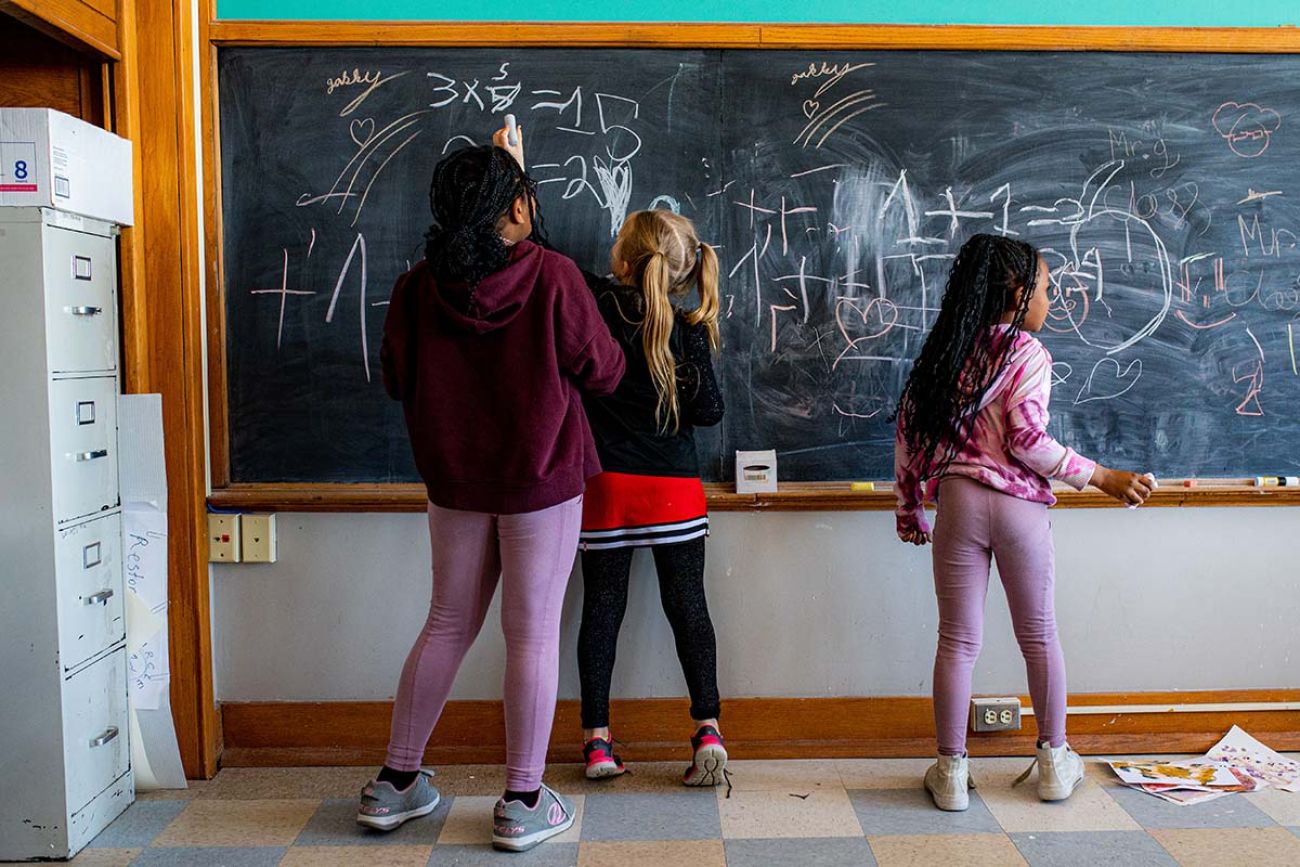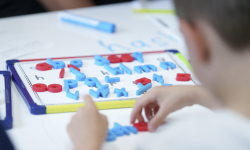School is back in Michigan. So is COVID-19. What to know

- Michigan K-12 schools and universities are emphasizing personal responsibility – not strict protocols – for COVID-19
- Vaccinations still encouraged, but universities have dropped earlier mandates
- Free COVID-19 tests will be available later this month
As Michigan K-12 schools and universities welcome back students four years after COVID-19 first hit the state, medical experts are emphasizing personal responsibility in the absence of stricter state or federal guidance.
Long gone are masking requirements, social distancing and building closures. Even the U.S. Centers for Disease Control and Prevention cut its five-day isolation guidance to 24 hours after symptoms improve for the fever-free.
At Ypsilanti Community Schools, Superintendent Alena Zachery-Ross said the district is still trying to communicate those changes to parents and students returning from summer break.
“COVID numbers are on the rise, so it’s important that we do take those added steps of having hygiene, of telling people of the new guidance, that students can come to school, that we don’t need them to stay home the full five days either,” said Zachery-Ross.
It’s a far cry from the early days in the pandemic, when state-ordered closures forced remote learning and a return to in-person classes sparked lengthy absences for students who tested positive or were exposed to the virus.
Related:
- COVID cases rising, but more slowly, as Labor Day fun, get-togethers loom
- Free COVID shots program ends for uninsured. In Michigan, what now?
- The latest COVID-19 vaccine is rolling out. Here’s what you need to know
As Bridge Michigan recently reported, COVID cases were rising late last month as students began returning to school, but testing is no longer widespread and wastewater detection systems suggest rates are higher in neighboring states.
“It’s a different virus than it was a couple years ago,” said Matthew Sims, director of infectious disease research at Corewell Health, the state's largest health care system. Plus, he said, “how we react or respond to the virus now is different.”
Almost everyone has some immunity to the virus, either through past infections of vaccinations, Sims said. The virus has also evolved, and generally, “variants tend to become more contagious but usually don’t become more dangerous.”
“The most important things are really to be handled more by the kids and their families than by the schools themselves at this point,” said Sims, referring to vaccinations, staying home when sick, testing for COVID-19, handwashing and coughing into an elbow rather than a hand.
Sims recommends that K-12 schools, colleges and universities share information about the virus but don’t punish people for having to stay home when they are sick.
Vaccine mandates cut at college
At the collegiate level, Michigan State University and the University of Michigan are among schools that have lifted COVID-19 vaccination requirements in recent years. MSU did so in February 2023, and U-M did so in July 2023, dropping its requirement for those living in on-campus housing.
Still, medical experts – and both universities – continue to encourage students and staff to get vaccinated.
U-M is planning to offer fall vaccination clinics to provide COVID-19 shots but does not yet have them available.
Where can I get COVID-19 tests?
You can purchase tests at your local pharmacy. The federal government will provide four free COVID-19 tests per household. People can sign up for the tests at this link later in September.
MSU currently advises students to return to class only if their symptoms are improving and they haven't had a fever for 24 hours.
“You must contact and work with your instructor to ensure all coursework is completed in a timely manner,” the university’s current guidance says. “You do not need to tell your instructors specifically why you are ill or self-isolating if you do not want to tell them, but you should make clear to them the number of class periods you expect you will miss.”
There is no requirement to report a positive COVID-19 test or COVID-19 exposure to the university. And MSU does not have specific dorms dedicated to students who test positive for the virus, said spokesperson Mark Bullion.
Elsewhere, Wayne State University “strongly” recommends vaccines and is leaning on CDC guidance for isolation. Eastern Michigan University encourages students who get COVID to “leave campus immediately” and report positive test results in an online form.
Laurie Lauzon Clabo, provost and senior vice president for academic affairs at Wayne State, said the campus changes reflect more understanding of the virus and available treatments.
“I think there is less fear than there was in 2020, but there is also, I think, a greater respect of the impact of the virus,” she told Bridge.
Pandemic aftermath
While the CDC has eased isolation recommendations, the federal agency continues to recommend schools take additional precautions to prevent the spread of various respiratory and stomach viruses.
Schools should teach students proper hand washing techniques and ‘respiratory etiquette,” improve ventilation for clean air, promote vaccines and clean, sanitize and disinfect classrooms “when appropriate,” the CDC said in May.
Schools should also encourage people to stay home when sick and staff should use personal protective equipment when caring for sick students, according to the guidance.
Many Michigan schools now welcoming students back to class have already used federal pandemic relief funds to update their heating, cooling and ventilation systems, said Peter Spadafore, executive director of the Michigan Alliance for Student Opportunity, a group of school districts.
Michigan schools collectively received roughly $5.6 billion in federal funds they could use for building improvement, COVID-19 supplies and efforts to address learning loss, among other things.
While this school year may bring a greater sense of normalcy contrasted with the pandemic, state tests scores are not normal.
State standardized testing shows that third grade reading proficiency is at an all-time low. Third grade students who took the test this spring were kindergarten students during the first full year of the pandemic.
“We need to collectively recognize that these students have been through one of the largest traumas in recorded history for classroom students and we can’t just pick up and move on because we know how to handle the virus,” Spadafore said.
Chronic absenteeism also remains an issue in Michigan and across the nation.
COVID-19 has affected student and staff attendance “tremendously,” said Zachery-Ross, the Ypsilanti superintendent.
Before the pandemic, the district encouraged students and staff to be at school every day, she said.
“Now we’re saying if you have symptoms, stay home, test yourself, because we’re thinking about the others in the classroom.”
Michigan Education Watch
Michigan Education Watch is made possible by generous financial support from:
Subscribe to Michigan Education Watch
See what new members are saying about why they donated to Bridge Michigan:
- “In order for this information to be accurate and unbiased it must be underwritten by its readers, not by special interests.” - Larry S.
- “Not many other media sources report on the topics Bridge does.” - Susan B.
- “Your journalism is outstanding and rare these days.” - Mark S.
If you want to ensure the future of nonpartisan, nonprofit Michigan journalism, please become a member today. You, too, will be asked why you donated and maybe we'll feature your quote next time!






